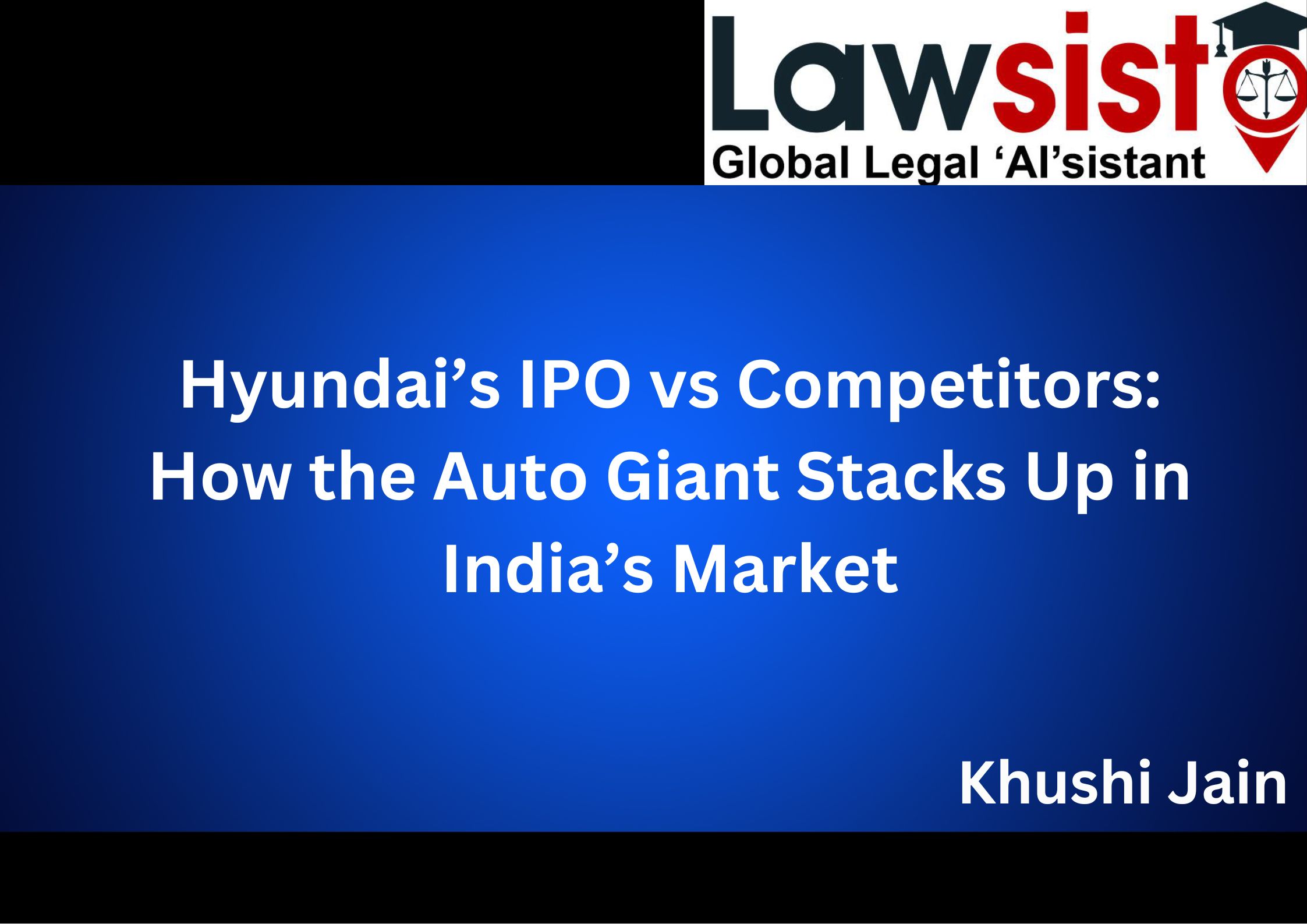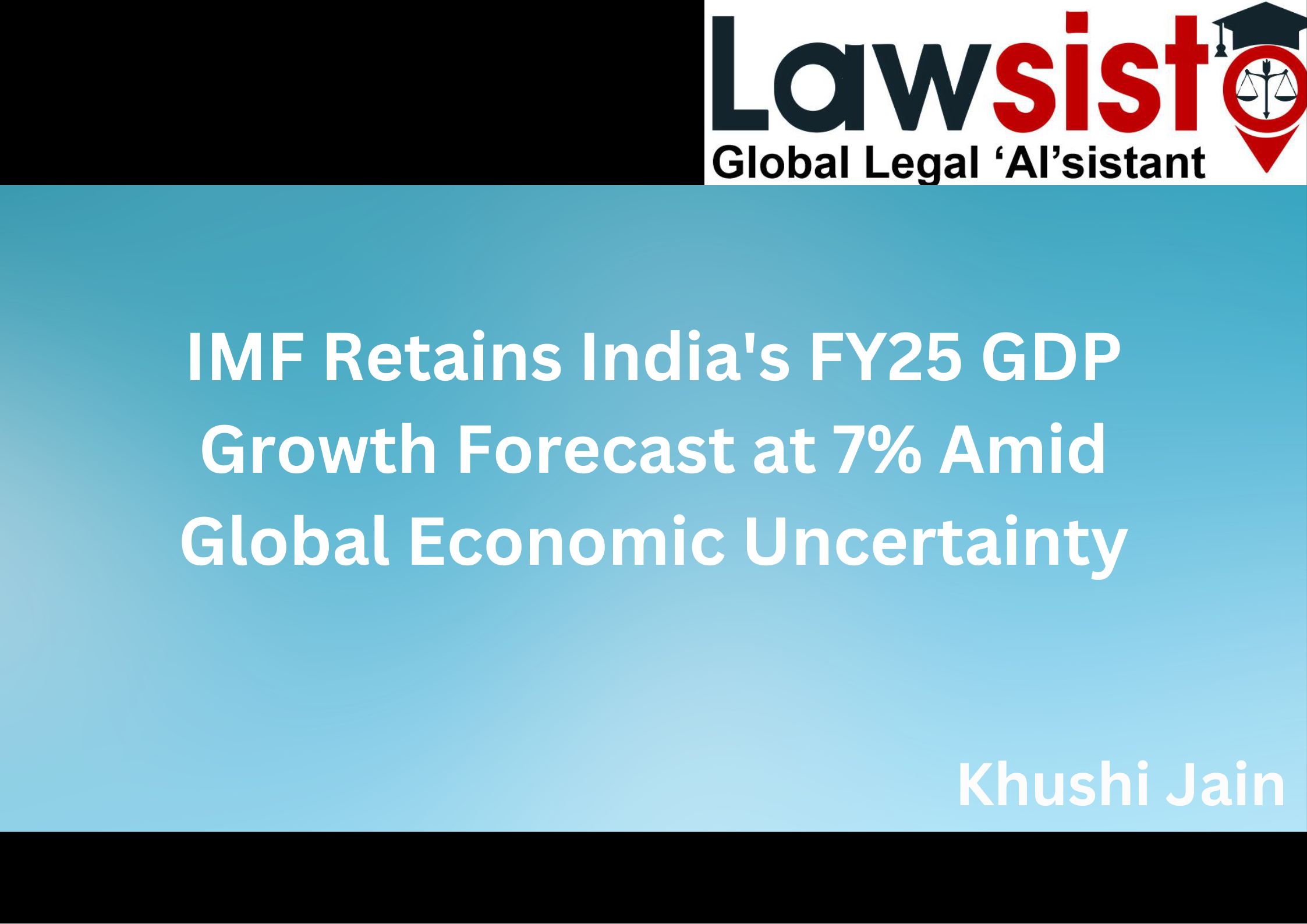Latest News
Hyundai’s IPO vs Competitors: How the Auto Giant Stacks Up in India’s Market

Introduction
Hyundai Motor India’s highly anticipated Initial Public Offering (IPO) has arrived, creating waves with a record-breaking issue size of Rs 27,870 crore, surpassing previous IPO giants like the Life Insurance Corporation of India. As India’s second-largest carmaker, Hyundai’s market presence is significant, but recent trends reveal the company faces stiff competition, particularly from homegrown brands like Tata Motors and Mahindra & Mahindra. With global ambitions and an evolving product lineup, Hyundai seeks to maintain its strong position while adapting to the growing demand for electric vehicles (EVs). This article explores how Hyundai Motor India compares with other listed car manufacturers and how its IPO fits into the broader landscape of the Indian automotive industry.
Hyundai's Competitive Landscape in India
The Indian passenger car market is notoriously competitive, with brands struggling to meet the demands of value-conscious consumers. Maruti Suzuki has long maintained its position as the dominant player in the market, holding a substantial share of the industry. However, Hyundai has firmly secured its place as the second-largest carmaker in India, with an impressive revenue of Rs 68,829 crore in FY24.
That said, Hyundai has seen challenges in maintaining its dominance, with competitors Tata Motors and Mahindra & Mahindra making strong comebacks. Tata Motors has notably been at the forefront of the electric vehicle (EV) shift, gaining positive traction in the Indian market. Meanwhile, Mahindra & Mahindra’s successful product launches have helped the company regain significant market share. As Hyundai works to stay ahead, its upcoming product pipeline, including electric vehicles, will be crucial to maintaining its market position.
Hyundai’s Key Models Driving Success
While Hyundai has faced increased competition, its popular models continue to drive growth. Hyundai Creta, the company’s flagship model, remains the leading player in the mid-size SUV segment, with a remarkable 38 per cent market share in Q1 FY25. The Creta accounted for 26.5 per cent of Hyundai’s total revenue in FY24, underscoring its importance in the company’s portfolio. Following the Creta, Hyundai’s micro-SUV, Venue has also proven to be a significant contributor, making up 21 per cent of total revenue since its launch in 2019.
Hyundai’s latest launch, the Exter SUV, has also shown promise. Introduced in July 2024, the Exter has already contributed 12 per cent to the company’s sales in FY24, reflecting Hyundai’s ability to attract consumer interest with new products.
Hyundai’s EV Strategy: A Mixed Track Record
As the global automotive industry pivots toward electric vehicles, Hyundai has introduced several EV models in India, though with mixed results. In 2023, Hyundai launched its most expensive vehicle to date, the Ioniq 5, which sold 1,400 units in its first 14 months, surpassing the company’s initial target of 500 units per year. However, Hyundai’s earlier EV offering, the Kona Electric, failed to capture consumer interest and was discontinued due to poor sales performance.
Looking forward, Hyundai is placing its hopes on the Creta EV, expected to launch in the final quarter of FY25, to spearhead its electric vehicle shift in India. Moreover, Hyundai has scheduled the launch of three additional electric vehicle models within the same timeframe. The success of these new electric offerings will play a vital role in shaping Hyundai’s growth trajectory and influencing its market valuation, especially as consumer interest in EVs continues to rise.
Hyundai’s Financial Strength and IPO Valuation
One of Hyundai Motor India’s strongest advantages is its industry-leading profit margins. However, some analysts are cautious, questioning whether these margins can be sustained as the company ramps up investments in new product development and expands its EV lineup. Despite these concerns, Hyundai’s balanced growth, solid margins, and plans have led analysts to view the company’s IPO valuation as fair, with a slight discount compared to Maruti Suzuki, India’s top carmaker.
SEBI Mandate and Future Stock Outlook
Hyundai’s IPO, comprising a complete offer-for-sale (OFS) of 14.21 crore equity shares by its Korean parent company, Hyundai Motor Company, marks the first IPO in the Indian automotive sector in more than 20 years. The most recent automaker to go public with an IPO in India was Maruti Suzuki, back in 2003. Hyundai’s decision to go public is expected to enhance the company’s visibility and brand image, while also providing liquidity in the public market.
However, a key challenge for Hyundai lies in the Securities and Exchange Board of India’s (SEBI) mandate that requires the company to offload 7.5 per cent of its shares within the next three years. This requirement could create a supply overhang, putting downward pressure on the stock in the near term. Still, such challenges are a common trade-off for large IPOs, and many investors see this as a small price to pay for long-term gains.
Day 1 IPO Subscription: Steady Response
Hyundai Motor India’s? 27,870 crore IPO saw a consistent response on its opening day, with 18 per cent of the total offer being subscribed during the initial round of bidding. Retail investors displayed strong enthusiasm, with 26 per cent of the retail portion subscribed, resulting in bids for 1.3 crore shares out of a total of 4.94 crore shares on offer. However, non-institutional investors submitted bids for just 13 per cent of the shares reserved for them.
Employees of Hyundai Motor India were more enthusiastic, with 80 per cent of the portion reserved for them already subscribed. Meanwhile, the portion set aside for Qualified Institutional Buyers (QIBs) saw more modest interest, with just 5 per cent of the allocation subscribed on the first day. The initial public offering is set to close on October 17, 2024.
Strong Anchor Investor Backing
Hyundai Motor India’s IPO has attracted a diverse group of anchor investors, further reinforcing confidence in the company’s potential. On October 14, Hyundai mobilized Rs 8,315.3 crore from 225 anchor investors, including prominent global institutional names such as the Government of Singapore, Monetary Authority of Singapore, Fidelity, and American Funds Insurance Series New World Fund. Together, these investors contributed Rs 2,191.66 crore to the offering.
Other high-profile global investors, including Blackrock, Vanguard, Schroder, and Goldman Sachs, also secured shares through the anchor book. On the domestic front, 21 mutual funds, including ICICI Prudential, HDFC, and SBI Mutual Fund, participated in the anchor round, acquiring a significant portion of the equity shares allocated to anchor investors.
Conclusion
Hyundai Motor India’s IPO marks a significant milestone in India’s automotive and capital markets. As the company prepares for the next chapter of growth, its ability to maintain its strong market position, capitalize on its EV offerings, and navigate the challenges posed by SEBI’s shareholding requirements will determine its long-term success. With a robust product lineup, industry-leading margins, and strong backing from global institutional investors, Hyundai appears well-positioned to continue its journey as one of India’s leading car manufacturers. Investors, while cautious of the potential supply overhang, are keen to see how Hyundai’s ambitious EV strategy and continued product innovation will shape the future of the Indian automotive industry.



















